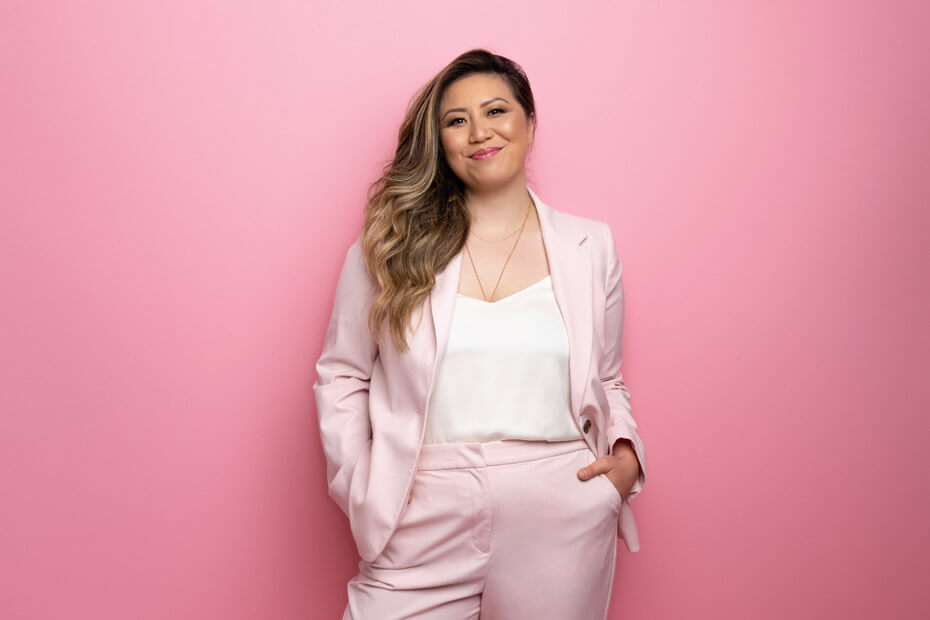Photo Credit: Kristen Purcell LAVIE Photography
“Everyone deserves to live safely and authentically,” says Wendy Chen, Johns Hopkins plastic and reconstructive surgeon. “Providing surgical services to the transgender and gender-diverse community is one way I manifest my commitment to social justice in my professional capacity.”
Why did you get into your profession?
In addition to the creative, artistic and intellectual challenges that define plastic surgery, certain life experiences steered me toward this rewarding and important specialty.
When I was very young, my grandparents lived with us. During the 1960s Chinese Cultural Revolution, my grandfather, a chemical engineer, had suffered burns to his extremities. His hands were stiff, he had scars on his thighs where doctors had taken skin grafts. At the time, his body seemed foreign, and his touch scared me. As a reconstructive surgeon and hand surgeon, I see this very differently now. Later, while in Taiwan in high school, I volunteered at an orphanage for children abandoned due to congenital differences, differences that plastic and reconstructive surgeons manage commonly. This helped me appreciate the profound, lifelong impact a surgeon can make on someone’s life and relationships.
As plastic, reconstructive and hand surgeons, working literally from head — to face to hands — to toes, our work is fundamentally humanistic. It can help change how a patient exists in the world, whether they can earn wages, enjoy hobbies. Our work can help improve confidence, happiness, even someone’s sense of dignity and quality of life.
What do you do during a typical day?
Rather than a typical day, I think I’m constantly managing many pots on the stove. In addition to clinic days — seeing patients in the office — and OR days — operating on patients — I am trying to build access to Johns Hopkins’ plastic surgery and gender affirming care services in the National Capital Region. I also work with students, residents and collaborators around the country, with various professional societies, community organizations and affinity groups. My research and advocacy interests are centered around women and minorities in plastic surgery, as well as understanding and eliminating disparities in patient care, whether in hand surgery or gender affirming care. When working with people on the West Coast, my days might start at 4 a.m. or end at 11 p.m.
What is your favorite part about your job?
When patients come back! And they tell me, “My child loves looking at his feet now.” “I was able to go back to work and provide for my family.” “I don’t have pain anymore.” “I feel comfortable in my body.” “My child can run/play/twirl a baton.” These are the things that I remember. It’s an incredible privilege to meet patients at a very vulnerable time in their lives, to somehow earn their trust to take them to surgery, and I take this responsibility very seriously. It is also very fulfilling to work with other dedicated practicioners — therapists, other doctors and surgeons, social workers and more — as plastic surgeons often do, to get the best possible outcome for a patient. As they say, “surgery is a team sport.”
What does Asian/Pacific American Heritage Month mean to you?
When I was in Oregon learning about gender affirming care, I would drive around the state on the weekends. On an off chance, I discovered Kam Wah Chung, a tiny, isolated Chinese medical clinic, general store, community center and residence from the 1800s, and a National Historic Landmark. This was a reminder that I am constantly learning how extensive — and, at times, painful — the history of Chinese Americans was in different corners of this country, and how important it is for these stories to be told, to be visible.
What do you do in your “spare time”?
Our family includes my partner, my shelter dog and our toddler. We like to make recipes from New York Times Cooking, get outdoors, get together with friends and family, try to keep the houseplants alive, and explore the DMV area!
